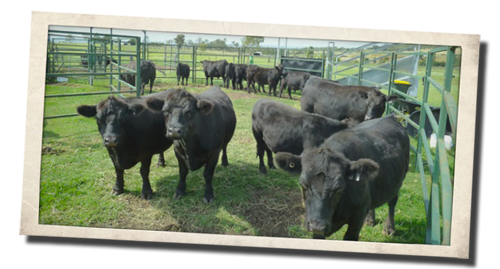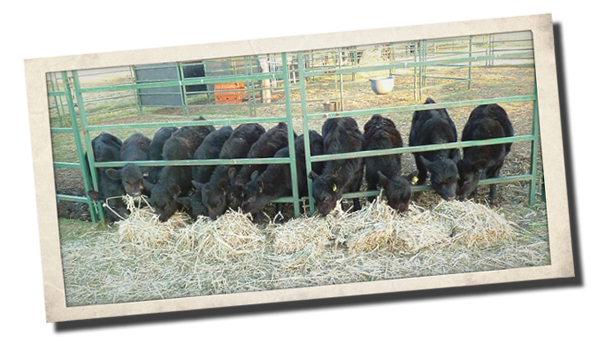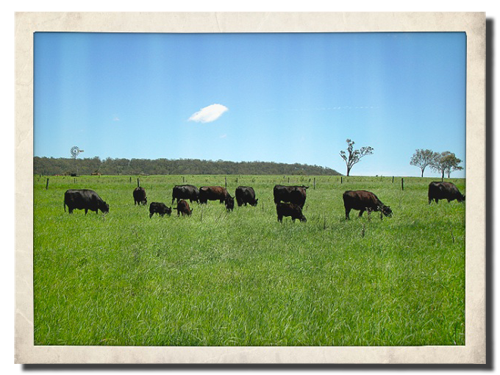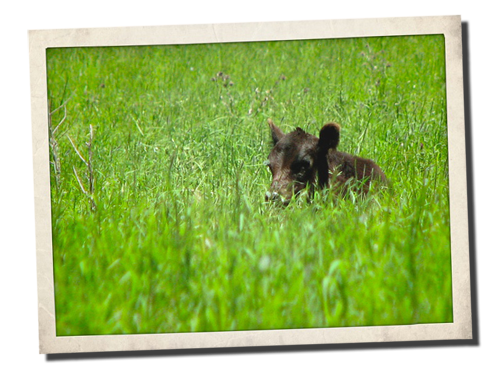|
|
Why Lowlines?
As you look around Australian Lowline marketing material, you will see plenty of reasons why Lowlines are the best cattle in Australia! Funnily enough, if you look at other breeds' web sites or promotional material, you will see similar claims and advantages.

When we were looking at the breed over about five years with thoughts of commencing a stud, we read all this stuff, absorbed it and realised it could not all be true.
Listed below are some of the more realistic claims, which we broadly believe to be true. As you can see, they can be broken down into two main areas: advantages for the small holder and advantages for the market.
Advantages for the Small Farmer
We dislike the label: hobby farmer. Sure there are plenty of so called primary producers who are not necessarily financially viable in their own right or have years or generations of experience to fall back on; but what they do is not just a 'hobby'.
We are certainly low volume producers, but we are also committed to maintaining the breed and ultimately selling quality beef products just like our larger colleagues out west.
So what are the advantages of Australian Lowline Cattle for a low volume producer?
Stocking Rates
Lowlines are marketed as being ideal for small acre properties. This is because Lowline cattle are about 60% of the size of their Angus ancestors and more of them are able to be run on any given acre. Some producers say you can run 10 Lowlines were another beef producer would normally stock 6 Angus cows. We are not convinced this exact ratio is necessarily viable, but there is no doubt that, due to their lesser body mass, and smaller, less demanding calves, we are running more Lowlines per acre than the equivalent in Blondes or Herefords (which we have also bred in the past).
Quicker Maturity
Lowlines heifers can be joined with Lowline bulls at 14 months. We have several heifers that calved before their second birthday. Contrast this with our Blonde d'Acquitaines and Herefords (when we had them), who did not become pregnant until after their second birthday.

Shorter Gestation
The Lowline gestation period at approximately 273 days is about a week shorter than other British breeds. This shorter period is a major advantage for dairy farmers. Using Lowline bulls they can get the pregnancy over and get on with milking about a week earlier than when they use dairy bulls. An extra week's milk over a herd of 100 cows is a substantial economic benefit. For the beef producer, this works out to being one more calf over the lifetime of a good cow than most other breeds. For small holders especially, the management advantage of being able to predictably plan on one calf per year at the same time each year should not be underestimated.
Docility
Lowlines are far less intimidating and much easier to handle than larger breeds. We had not been in close proximity to any beef cattle before we took delivery of our first Lowline heifers. We learned quickly to tread carefully and have had our share of incidents, but it is certainly true that their small size, docile nature and natural absence of horns make Lowline cattle among the easiest of all cattle breeds to handle.
Provided they are treated with respect, Lowlines are particularly useful to help children to learn and practice cattle handling techniques. We are now involved with several local schools and have loaned and donated several animals. In these days of protective OH&S legislation, we see particular advantages in using Lowlines to learn the basics before agricultural students progress onto larger cattle.
Lighter Infrastructure
As with any breed of cattle, fences need to be secure, but the smaller size and docile nature of Lowlines also enables the use of lighter and smaller fences, yards and handling equipment. We have found that the use of electric fencing for new fences and to upgrade older fences to be satisfactory. Don't be misled, Lowlines will still 'fit' into full sized yards if that's what you have.
Husbandry
Lowline cattle have been developed from Angus cattle. In all aspects of their management and husbandry they are similar to this and other British breeds. Veterinarians and other suppliers are familiar with the requirements and behaviour of these cattle. Apart from routine maintenance, such as vaccination programs, drenching and fly and tick control, Lowlines require a minimum of care.

Easy Start
Lowlines are an excellent starting point for entry into the beef industry, be it full time or as a supplementary interest. In our case, we have bred 'full size' cattle as well as Lowlines. We were unlikely to have considered full sized beasts as an option in the first instance.
There are Lowline cattle promotion groups in each State with amazingly helpful people to assist newcomers to learn more about cattle care and husbandry. We were amazed at the amount of free, genuine care and assistance that we were given to learn about the industry. Experienced breeders hold open days, assist with the showing of cattle and promote the breed both in Australia and internationally. It is a valuable community in the real sense of the word.
Marketing Advantages
Each breed will emphasise their best features against the competition. In this arena, it should be remembered that Lowlines have evolved from Angus cattle. The Angus breed has numerous advantages in the quality (tenderness and marbling) of the meat and broad acceptance in the market by butchers and consumers alike.
High Carcase Yields
Put simply, the part that Lowlines lost during the selective breeding program at Trangie was most of their legs! In most beef cattle, legs are waste. There is very little usable beef and lots of heavy bones. With short legs, the percentage increase of valuable dressed weight over the live weight is significant. We've heard of yields as high as 70%, however 65% is more likely. Very high carcase yields are common for Lowlines and their crosses. The increasing popularity and success of Lowline crosses in carcase competitions is testament to this.
Smaller Cuts
Lowline beef, as a traditional beef, appeals to the butcher, chef and consumer alike. It exhibits 'normal' beef presentation and marbling, with the traditional cuts of meat being smaller in size than other breeds. These tender, smaller cuts have a special appeal in the restaurant trade.

Minimisers
Lowline bulls are becoming increasing popular with dairy breeders, because of the shorter gestation period, and with beef breeders who see the benefits of calving ease, especially for first time heifers. The use of Lowline semen in the dairy industry for first calves permits earlier joining and safer calving as well as yielding vigorous beefy calves for feed-lotters.
More Grass into Beef
When higher percentage yields per carcase are combined with early maturity, higher stocking rates and shorter gestation, the potential of a well managed Lowline herd can be easily seen. It all adds up to turning a given amount of grass into the maximum amount of beef.
Where to from here?
Lowlines themselves are obviously not going to take the export beef market by storm as many other breeds are far more adapted to the Australian climate and provide the necessary economies of scale. The advantage of the Lowline breed is to add value as a first cross, flourishing with the benefits of hybrid vigour.
Areas where small holders can benefit from Lowline stock are in the production of bulls for the dairy industry and for unjoined heifers; providing small, tender cuts to boutique restaurant markets and dedicated stud production. Potential 'sea changers' should not overlook the possibility of making the lifestyle decision to raise Lowlines with the benefit of another income; a choice which provides a great quality of life.
Amberfield Lowline Stud
Greenmount-Nobby Road
GREENMOUNT QLD 4359
AUSTRALIA
www.amberfield.com.au
©Copyright 2005 - 2026. Geoff Buttsworth - v4.2 - 07 July 2013

